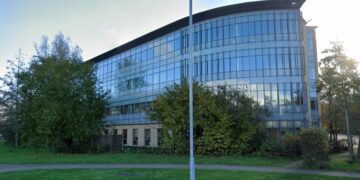IS THE high cost of making a home greener and more energy efficient worth it? That was the question from a Wokingham resident asked to the executive.
Peter White pointed out that solar panels cost him £9,000, and generates around five megawatt hours of electricity a year, saving around 1 tonne of carbon dioxide – roughly the same as a medium sized tree. But, he said, a developer near him had removed two trees, meaning his saving had been negated.
His electric car, in which he drives around 6,000 miles a year, cost him £18,000. While this reduces his carbon footprint, a 4,500 home development such as that mooted for Hall Farm would lead to 500,000 tones of carbon dioxide – he could drive a petrol car for 150,000 years to emit that much.
And his heating includes spending up to £20,000 on a heat pump and £6,000 on IR panels.
Given the high cost and the environment impact of others, he wanted if his efforts were worth it.
At a meeting of Wokingham Borough Council’s executive committee held on Thursday, July 27, at its Shute End offices, he also asked: “Does Wokingham Borough Council have a coherent, realistic strategy for explaining to residents why they should engage with the Climate Emergency Action Plan, considering the cost of even attempting to become carbon neutral, and that fact that development in WBC wipes out any gains we might make individually?”
Council leader Cllr Stephen Conway thanked Mr White for his question and for his commitment to invest to minimise his carbon footprint, saying this was important for everyone to try.
“Delivering sustainable communities is important … While building homes does have a carbon impact, it’s important they are delivered to the highest possible environmental standards,” he said, adding they should also be well connected to jobs and service by public transport and safe walking and cycle routes.
“We do recognise that current building regulations fall short of what is needed to address the climate emergency.”
He said the development Mr White mentioned was approved in 2016, and to different building regulations. He said that under the new local plan there would be new policies aimed at achieving a zero-carbon impact with properties.
Cllr Conway also referred to the Solar Together scheme aimed at allowing residents to install solar panels on their home through vetted suppliers at a reduced cost.
In response, Mr White said he felt the council’s climate emergency response said everyone in the borough would play their part in carbon reduction, and wanted to know on a scale of one to 10 how well the council thought the borough was doing with this.
Cllr Conway reminded him he was responding on behalf of Cllr Sarah Kerr, the executive member for the climate emergency who was unable to attend the meeting. As such, he felt she would be able to give a more detailed response on her return, and this would be in the form of a written response.
“It would be very hazardous to try and give a number without the guidance of the person who is overseeing the work on this important matter,” he added.
In a later question, Cllr Peter Harper wanted to know how much the planned Barkham Solar Farm will cost, as figures in the Medium Term Financial Plan is shown as £8 million, while the Climate Emergency Progress Report shows £26.8 million.
Cllr Conway confirmed it is forecast to be £26.8 million, based on detailed design work and with input from specialist consultants and connection to the grid. The lower figure was based on the “best estimated available at that time, when the project was at an early stage”.
Cllr Harper then wanted to know if any capital spend was allocated for the first phase of the plan, something that Cllr Conway said Cllr Kerr would respond to on her return.
















































